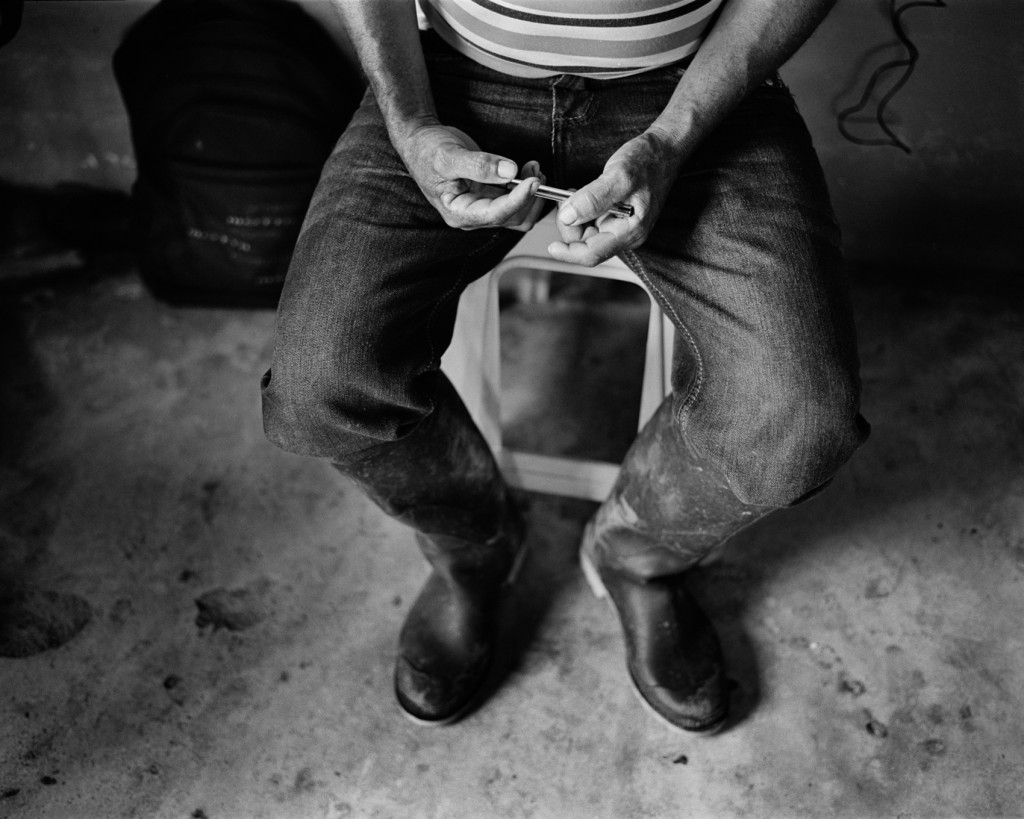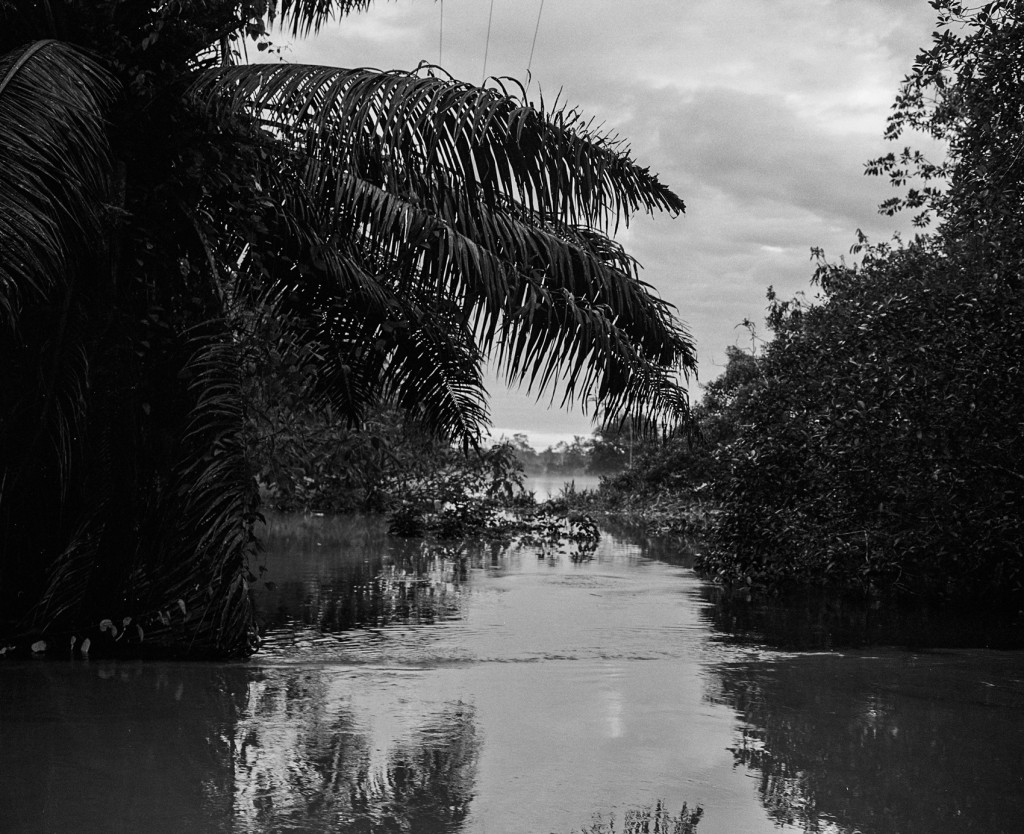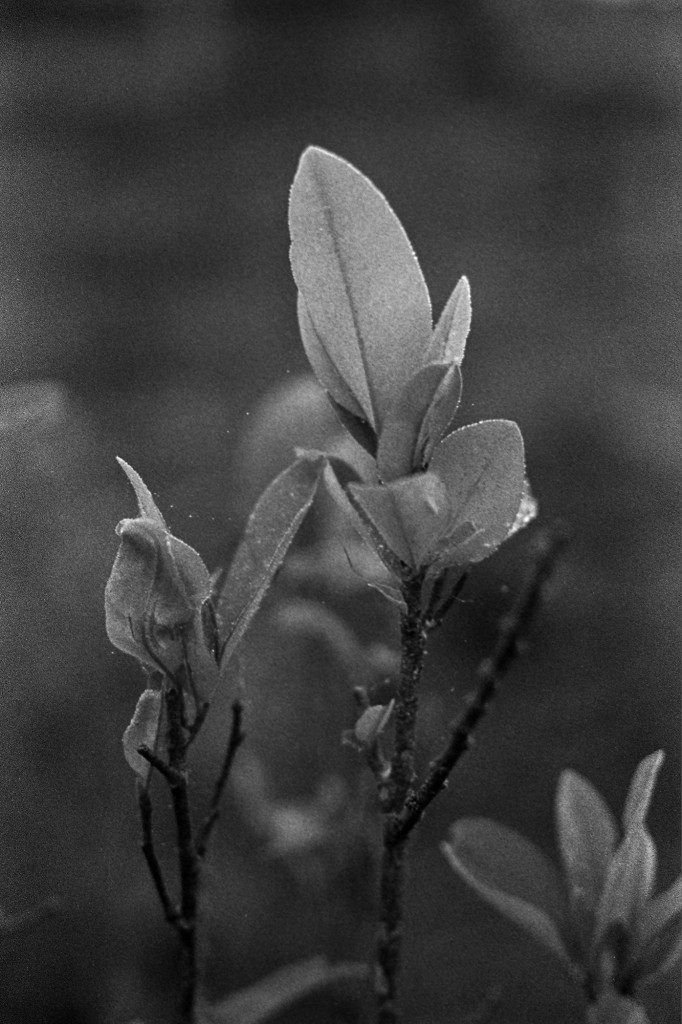The Twisted Legacy of Colombia’s Aerial Cocaine Crop Spraying Program
LATIN AMERICA AND THE CARIBBEAN, 8 Jun 2015
Steven Cohen, VICE - TRANSCEND Media Service
After 30 years of dubious results and loud protests, the flagship of the supply-side drug war in North America has finally been brought to ground.

The area most heavily targeted by aerial coca fumigation in Colombia has been the southern Amazonian plains of Putumayo.
3 Jun 2015 – Last month, acting on the recommendations of President Juan Manuel Santos, Colombia’s National Council on Dangerous Drugs (CNE) voted 7-1 to indefinitely suspend the aerial fumigation of coca, the plant precursor to crystal cocaine. Colombia has been the only drug-producing country in the world where the US-backed fumigation program still operated, and the move represents the Santos administration’s first concrete step toward progressive drug reform. If the New York Times editorial board can be believed, ending fumigation may even mark a bellwether shift in Latin America away from Uncle Sam’s anti-narcotics hardline.
But if fumigation’s suspension is going to make a real difference, it should be recognized for what it is: not just a bad idea that got worse with age, but the centerpiece of a global drug war that has persisted through the stubbornness of proponents and their blaring disregard for the consequences on people and the environment.
In other words, what the hell took so long?
Coca fumigation was implemented in Colombia in 1994, at the behest of the United States and on America’s dime. To the tune of roughly $2 billion, the secretive and controversial fumigation program has seen weaponized herbicide sprayed over some 4.3 million acres of Colombian territory, including national parks, waterways, and Amazonian rainforest.
The environmental damage inherent in such a strategy is real and disconcerting. Aside from the direct loss of plant and animal life, farmers whose crops wither from fumigation are forced to push ever deeper into the jungle, slashing and burning as they go. Flying into Puerto Asis, the hub of the coca-growing Putumayo department (or state), the brownish wastelands of abandoned plots and charred clearings intended for new ones dot the Amazonian plains like acne scars.
But the government framed its decision in terms of the impact fumigation has had on people, not wildlife. President Santos and the Colombian Ministry of Health pointed to a recent World Health Organization (WHO) finding as the rationale for their recommendation to the drugs council. Following a lengthy review of the existing literature, the WHO concluded that glyphosate, the main chemical agent used to spray coca, is “probably carcinogenic to humans.”

Coca farmers, like this man in the jungle hamlet of Alto Amarradero in Colombia’s southern Putumayo department, are peasants, not the narco-mafiosos as US policymakers have attempted to paint them.
Grave health claims are nothing new in the fumigation debate, though, even if the government’s preoccupation with them is. The affected communities have been denouncing fumigation’s effects for as long as there’s been a program. Indeed, the Ministry of Health’s own misgivings date back to Colombia’s disastrous, short-lived experiment spraying marijuana in the mid 1980s. Since then, independent research has linked fumigation to everything from skin disease to miscarriages.
The Colombian government recognized the legitimacy of these risks almost two years before it decided to suspend fumigation within its own territory. In 2013, Colombia reached a settlement with Ecuador to preclude a decision from the International Court of Justice. Having acknowledged the injurious effect of fumigation on its neighbor, Colombia agreed to pay a $15 million indemnization and halt all spraying within 6.2 miles of their shared border.
Nonetheless, US officials continue to dismiss health concerns. In the week leading up to last month’s vote, both Kevin Whitaker, the US ambassador to Colombia, and William Brownfield, the assistant secretary of state for the Bureau of International Narcotics and Law Enforcement Affairs, publicly lobbied against suspending fumigation. (The US State Department and DEA declined to make officials available for interview for this article. Embassy press officers did not respond to numerous requests for comment.)
“In the history of the program, there hasn’t been one single complaint of health problems in which a direct connection to the aerial spraying of glyphosate has been proved,” Ambassador Whitaker wrote in El Tiempo, Colombia’s largest newspaper. Brownfield, himself a former ambassador to Colombia, was no less categorical. “There isn’t one single example of a person who’s suffered harm from the use of glyphosate,” he told Colombian media.
Glyphosate, the argument goes, is permitted for household and agricultural use in 160 countries, including the United States. If the stuff is as toxic as all the naysayers contend, why haven’t there been outbreaks elsewhere?
As investigative journalist Garry Leech has reported, to eradicate the hardy coca bush, glyphosate is sprayed at five times the regular dosage and mixed with additional compounds that ensure it sticks to the leaves. Because fumigation planes are often fired upon by Revolutionary Armed Forces of Colombia (FARC) guerrillas, pilots fly 100 feet or more above the tops of their targets, ten times higher than the upward limit the herbicide manufacturer Monsanto’s instructions warn against.
Whether it elevates the risk of, say, respiratory illness or not, the resulting particle drift is enough to dispel the fantasy of fumigation as the precise anti-narcotics tool some policymakers make it out to be.
Check out our documentary on the sewers of Bogota.
Leonaldo Obando’s farm in the jungle foothills of Colombia’s southern Andes is no larger than a hectare (2.47 acres). Unassuming, chest-high green coca bushes line the fields his children play in, but so, too, do yucca, plantains, corn, and other staples. Leonaldo relies on the latter to feed his family. The former provides just enough income to cover their basic needs.
According to University of the Andes economist Daniel Mejia, the average Colombian coca farmer earns $2,000 a year per hectare. Attacking the drug trade at the crop stage does not, as Whitaker suggests in his op-ed, “hit narco-mafias” so much as it punishes the rural poor for their own systemic exclusion. Racism being a pillar of that system, the hardships inflicted by fumigation fall disproportionately on Afro-Colombians like Obando, and indigenous peoples, like the nearby Kofan.
“Aerial fumigation is a cure worse than the disease, because in practice it tends to be indiscriminate, adversely affecting the already fragile food security of the inhabitants as well as destroying medicinal plants which are of deep cultural significance,” Carlos Salinas, a former Amnesty International advocacy director who’s worked with the Kofan peoples since 2004, told me.
To Jule Anzueta, a community organizer from the Putumayo region, coca, a fast-growing, high-demand cash crop, is not a disease at all, but an imperfect cure to a chronic and far more pernicious malady. “The coca plant isn’t the problem. The problem is that there are economic and social conditions that the government has never wanted to resolve,” he told me.
Colombia has among the least equal distributions of land of any country in the world, both a cause and effect of its 50-year armed conflict. Poverty stands at 65 percent in the countryside—extreme poverty at 33 percent. After 30 years of officially sanctioned paramilitary terror, Colombia’s internally displaced population—at roughly 6 million people—is second only to Syria’s.
According to Alberto Yepes, a prominent Colombian human rights leader, it was precisely this combination of economic degradation and violence that led to the settlement of Colombia’s coca frontiers.
Take Putumayo, a focal point of fumigation efforts.
Putumayo’s population has more than tripled since the start of Colombia’s coca boom, as colonists arrived fleeing paramilitary terror, economic crisis, or both. Coca is the lifeblood of the economy, illicit and otherwise, in much of the department, where oil and other commodity booms have left little residual wealth or development.

The Putumayo River is one of Colombia’s largest and flows into the Amazon River Basin, along with any herbicides that have been sprayed in its waterways.
There are no roads to bring goods to or from Leonaldo Obando’s jungle hamlet of Alto Amarradero. No school to educate his children, no medical facility to treat their illnesses, no technical training to improve his licit crop yield, no agricultural insurance to protect his losses, and no subsidies or available credit to help him compete with farmers from the United States, whose industrialized food stuffs now flood the Colombian market.
For all intents and purposes, there is no Colombian government here, just the planes that fly overhead and poison the only livelihood available. (The fumigation will reportedly be phased out by October.)
“What the government has done is stigmatize and criminalize the peasant farmer,” said Anzueta, the community organizer.
In a preliminary anti-drug agreement, signed as part of ongoing peace talks with the FARC rebels, the government acknowledged that “conditions of poverty, marginalization, [and] weak institutional presence” are key factors behind Colombia’s transformation into the world’s largest coca producer. That distinction is one it has already ceded to Peru, which, unlike Colombia, has a strong cultural tradition of coca use. When it comes to actual policy, however, the government’s stance toward coca growers has not been so nuanced.
“It’s very unfortunate, because… coca growing has provided a better income for certain people, and provided better for their families, but it’s still illegal,” Todd Howland, the United Nations High Commission for Human Rights’ representative in Colombia, told me. Coca production, he explained, has been taxed and regulated by the FARC rebel group, which holds more authority in Colombia’s coca-growing regions than the government ever has. And so a peasant farmer who resorts to coca is not simply a criminal—as far as the state is concerned, “they become part of the insurgency.”
Because of the way drug prohibitionism has been integrated into Colombia’s decades-long anticommunist crusade, “The great peasant masses are seen as an enemy of the state, as an ally to the guerrilla,” explained Yepes, the human rights leader.
The 12 US House Democrats who penned a letter supporting the suspension of aerial spraying made a related point. “Fumigation,” they wrote, “often has the effect of damaging the government’s credibility in area’s in which it has little presence.”
Some take the argument further. “There are two things you always hear,” Adam Isacson, the senior Colombia expert at the Washington Office on Latin America (WOLA), told me. “‘They spray us, because they think we’re like cockroaches.’ And, ‘They spray us, because…they just want to displace us so they can take all we have.’ Whether that’s true or not, the fact that it’s so widely believed is a problem for Colombia…It’s sort of like counterinsurgency in reverse.”
Isacson’s work suggests that malicious intent explains fumigation more coherently than a genuine interest in ridding Colombia of drugs. To quote from one of his recent articles on the subject, “Even if glyphosate were as safe as baby shampoo or spring water, aerially spraying it would still be a cruel and ineffective policy.”
After all, the FARC’s role in the Colombian drug trade—and, by extension, the role of coca production in general—has been grossly overstated, especially when compared to that of the right-wing death squads that control cocaine processing and transnational shipment.
More importantly, as Isacson notes, there is no evidence that fumigation has done anything to reduce coca production in Colombia, much less keep cocaine off of US streets. Coca production actually rose during the height of fumigation. Recent drops, he writes, should be attributed to manual eradication, fumigation’s more effective, but more dangerous, sister policy.
According to a 2013 Brookings Institute study, fumigation sprays 32 hectares of land for every hectare of coca it successfully eradicates. That’s $57,150 per hectare of coca, versus the roughly $450 the leaves themselves are worth. Fumigating crops in Colombia, then, cost $240,000 for every kilogram of cocaine it prevented from reaching the United States.
Peru and Bolivia, the world’s two other major coca-producing countries, discarded fumigation decades ago, for many of the very reasons Isacson and others have spent the last 15 years calling on Colombia to do the same. In 1994, the year the United States began funding coca fumigation in Colombia, the RAND Corporation conducted a study for the US Army that found domestic treatment to be 23 times more effective, per dollar spent, than a supply-side drug war abroad.
Facing hardline backlash at home and diplomatic pressure from Washington, the Colombian government has already started testing alternative herbicides to replace glyphosate, according to Colombian media reports. Should it reach a final peace agreement with the FARC rebels, the government has preemptively reserved the right to continue spraying coca.
“It’s a zombie program,” according to Isacson, the mindless brainchild of a senseless drug war.
So even when it’s down, it’s never truly dead.
_______________________________
Steven Cohen is a freelance journalist based in Colombia and former editor of Colombia Reports.
All photos by Miguel Winograd
DISCLAIMER: The statements, views and opinions expressed in pieces republished here are solely those of the authors and do not necessarily represent those of TMS. In accordance with title 17 U.S.C. section 107, this material is distributed without profit to those who have expressed a prior interest in receiving the included information for research and educational purposes. TMS has no affiliation whatsoever with the originator of this article nor is TMS endorsed or sponsored by the originator. “GO TO ORIGINAL” links are provided as a convenience to our readers and allow for verification of authenticity. However, as originating pages are often updated by their originating host sites, the versions posted may not match the versions our readers view when clicking the “GO TO ORIGINAL” links. This site contains copyrighted material the use of which has not always been specifically authorized by the copyright owner. We are making such material available in our efforts to advance understanding of environmental, political, human rights, economic, democracy, scientific, and social justice issues, etc. We believe this constitutes a ‘fair use’ of any such copyrighted material as provided for in section 107 of the US Copyright Law. In accordance with Title 17 U.S.C. Section 107, the material on this site is distributed without profit to those who have expressed a prior interest in receiving the included information for research and educational purposes. For more information go to: http://www.law.cornell.edu/uscode/17/107.shtml. If you wish to use copyrighted material from this site for purposes of your own that go beyond ‘fair use’, you must obtain permission from the copyright owner.
Read more
Click here to go to the current weekly digest or pick another article:
LATIN AMERICA AND THE CARIBBEAN:
